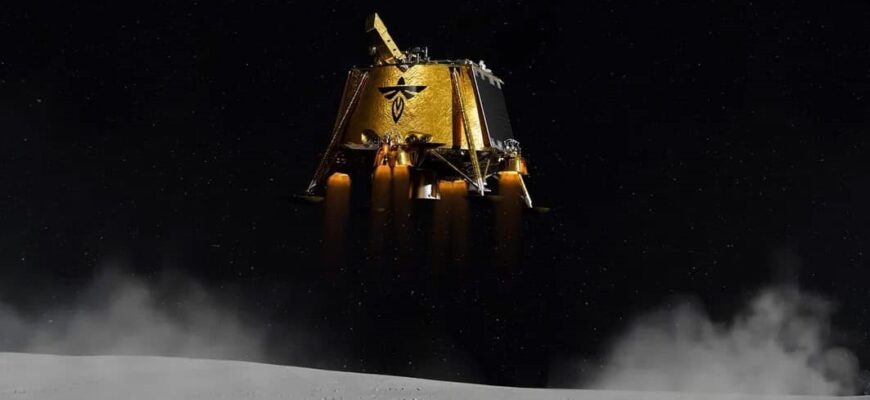On March 2, 2025, a groundbreaking moment in space exploration occurred as a privately operated spacecraft successfully landed on the Moon. The mission, carried out by Firefly Aerospace, marked the first time a commercial entity achieved a fully operational lunar landing. This milestone represents a shift in the industry, demonstrating that private companies can now take on complex interplanetary missions. The team at TheMors has compiled an in-depth analysis of this historic event and its implications for the future of lunar exploration.
- Why This Landing Is a Major Breakthrough
- Overcoming Past Challenges
- NASA’s Collaboration with the Private Sector
- Scientific Goals of the Mission
- Analyzing Lunar Surface Composition
- Testing Lunar Dust Mitigation Technology
- Monitoring Solar Radiation Effects
- The Future of Private Space Exploration
- Increased Competition in the Space Industry
- Lowering the Cost of Lunar Missions
- Preparing for Mars and Beyond
- What This Means for the Future of Space Travel
- Public-Private Partnerships Redefining Space Exploration
- A Step Closer to a Permanent Human Presence on the Moon
- What’s Next in Private Space Exploration?
- Stay Updated with TheMors – Breaking News
Why This Landing Is a Major Breakthrough
Overcoming Past Challenges
Previous attempts by private companies to land on the Moon have faced significant obstacles. In 2024, Intuitive Machines’ IM-1 mission reached the lunar surface but tipped over, preventing full functionality. Blue Ghost, however, executed a controlled descent and remained stable upon landing, making it the first privately built spacecraft to accomplish a fully successful soft landing.
NASA’s Collaboration with the Private Sector
Although Firefly Aerospace led the mission, NASA played a supporting role by providing funding through the Commercial Lunar Payload Services (CLPS) program. This partnership highlights the growing reliance on private industry to handle space exploration while governmental agencies provide funding and oversight.
Scientific Goals of the Mission
Analyzing Lunar Surface Composition
A primary objective of this mission is to study the composition of lunar regolith. By analyzing the mineral content and structure of the Moon’s surface, scientists hope to determine how its resources can be utilized for future human missions and permanent settlements.
Testing Lunar Dust Mitigation Technology
One of the biggest challenges in lunar exploration is dealing with fine dust particles that can damage spacecraft and equipment. Blue Ghost carries an experimental dust mitigation system designed to repel lunar dust using electrostatic forces. If successful, this technology could be crucial for future Moon bases and long-term missions.
Monitoring Solar Radiation Effects
The spacecraft is also gathering data on how solar radiation interacts with the Moon’s surface and Earth’s magnetic field. This research will help scientists develop better protective measures for astronauts and spacecraft operating in deep space.
The Future of Private Space Exploration
Increased Competition in the Space Industry
The success of Blue Ghost demonstrates that private companies are now capable of executing high-risk, high-reward missions beyond Earth’s orbit. This paves the way for increased competition, with companies like SpaceX, Blue Origin, and Astrobotic working on their own lunar and interplanetary projects.
Lowering the Cost of Lunar Missions
Traditionally, Moon landings have been prohibitively expensive, costing billions of dollars. However, the success of Blue Ghost, which was completed for under $100 million, suggests that commercial ventures can dramatically reduce the cost of lunar exploration, making it more accessible to a wider range of organizations.
Preparing for Mars and Beyond
Lunar missions serve as critical testing grounds for future Mars exploration. If private companies can establish reliable transportation to and from the Moon, the next logical step will be expanding these capabilities to Mars and beyond. The success of this mission suggests that a new era of deep-space exploration may be closer than previously expected.
What This Means for the Future of Space Travel
Public-Private Partnerships Redefining Space Exploration
Governments are no longer the sole operators of deep-space missions. With increasing collaboration between national space agencies and private firms, space exploration is shifting toward a more sustainable, commercial-driven model. This means we could soon see lunar cargo deliveries, commercial Moon bases, and even tourism in space.
A Step Closer to a Permanent Human Presence on the Moon
The data collected by Blue Ghost will contribute to planning future permanent lunar installations. Scientists and engineers are already designing habitats that could house astronauts for extended stays, and private companies are expected to play a key role in making this a reality.
What’s Next in Private Space Exploration?
The next phase of private space exploration will focus on creating sustainable lunar infrastructure. Companies are already working on advanced robotics for Moon construction, fuel extraction from lunar ice deposits, and 3D-printed habitats for human missions. By the end of the decade, regular lunar operations may become a reality.
Stay Updated with TheMors – Breaking News
For the latest updates on space exploration, scientific discoveries, and future missions, visit TheMors – Breaking News. Stay informed about the next generation of space travel and groundbreaking technological advancements.









